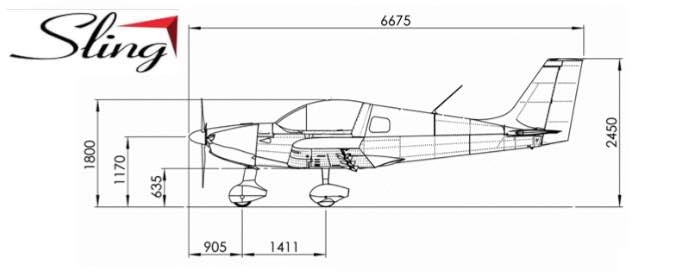Making a commitment to a specific model of wingtip light turned out to be quite the adventure. I did it. I think I’ll be happy with the choice. Time will tell.
Early on, I considered FAR § 91.209 Aircraft Lights and advisory circular AC 20-30B. That led to:
a. Advisory Circular AC 20-74, Aircraft Position Lights and Anti-collision Light Measurements.
b. Advisory Circular AC 43.13-2A, Acceptable Methods, Techniques, and Practices, Aircraft Alterations.
c. Technical Standard Order ('.ISO) C30b, Aircraft Position Lights.
I began to wonder how much time and effort I would have to put in to end up with demonstrably legal and adequate day and night, VFR and IFR lighting on my Sling 2 experimental. Man! This could get involved!
Just like my Warrior, I expect to have a red beacon on top of my VS and 3-in-1 lights on the wingtips. What and how much do I have to do – and prove – to achieve the same thing on my Sling 2? I asked questions on several builder groups and forums. Would 3-in-1 lights on the Sling 2 wingtips be ok? Will they be visible? Will I need a white tail light? Are non-TSO’d lights even legal at night? On and on.
I eventually decided that I was overthinking the whole business. I’d chosen the red LED tail strobe months ago. That’s a done deal. There’s a place on the wingtips for teardrop-shaped lights – and dammit! – they’re going to be cool-looking 3-in-1 LEDs. There!
It simply came down to which light? I’ve got Aveo for the tail. For sync compatibility, I’ve found I have to stick with Aveo on the wings too. They have a TSO’d product. They also have an experimental version of that same light. Even that experimental one is pricey. Aircraft Spruce had a sale on Aveo PowerBurst NG DayLite, w/white base – 300 bucks-a-pair. That’s more palatable than $780/pair for the nearly-almost-TSO’d experimental ones.
So there you have it – the tipping point! Price! Decision made. Hopefully the DAR will be happy when the time comes. I like ’em.
Another thing that gave me pause was how to mount the lights to the wingtips. The KAI no longer matches the composite parts that came with the kit and it hasn’t been updated in a long while. There is a callout for a plate with rivnuts to be mounted by some [unstated] means to the inside of the wingtip, under the site where the light will sit. That area is quite rough and I didn’t see how I was going to make a plate to fit and to get it attached and aligned.
Fortunately, I got some inspiration from a post on the FB Sling Builders group. Epiphany! Rivnuts and epoxy-glue is the way to go. Brilliant! The lights have mounting holes perfectly suited for #6-32 screws. M4 is too big and M3 is too small. Here we go mixing standards again – but what can you do?
I used the rubber base-gaskets provided with the light as a template to mark where holes go in the wingtips. I did some careful drilling and enlarged the hole for the wire bundle with a step-drill.
I needed the screws to be square to the mounting surface. I put each #6-32 x 1.25″ screw into its hole and threaded on a rivnut. I observed some amount of gap under the edges of the rivnut and used a wood-carving bit in the Dremel Tool to machine a small, flat surface for each rivnut to seat against, inside the wingtip. I cleaned up the areas with solvent on a paper towel. I positioned the rivnuts, wide flange to the mounting surface, and secured them gently with their screws. Then I carefully applied [original] JB Weld epoxy to the fiberglass and built up a mound around the rivnut, just below where the screw emerges.
Once the epoxy was cured I had perfectly aligned and ruggedly attached blind anchors for the the lights. This worked so nicely and was so easy to do I can hardly stand it! The rivnuts are not “set” as they normally would be. They’re just glued in place. For this application, the light mounting screws will never be tightened to the point where the rivnuts might compress.
